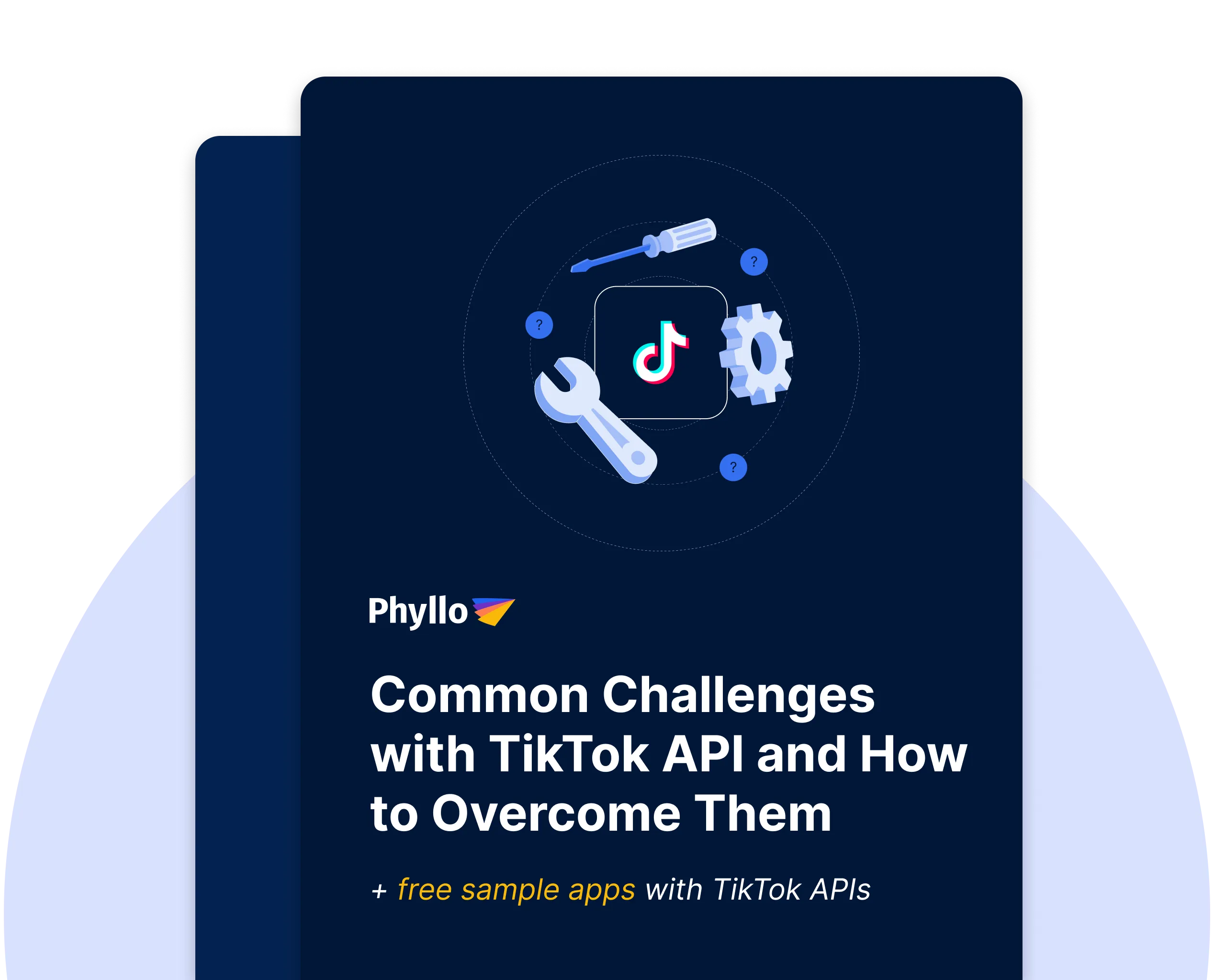TL;DR
Manual influencer vetting is time-consuming, subjective, and error-prone. Social screening APIs offer a data-driven alternative that improves accuracy, scales effortlessly, and flags risk in real time. This blog compares both methods across accuracy, efficiency, scalability, and legal compliance, helping brands choose smarter ways to conduct social media checks and protect brand safety.
Why Influencer Vetting Accuracy Matters in 2025
With influencer marketing spending expected to surpass $30 billion by 2025, brands are placing higher stakes on choosing the right creators. Accuracy in influencer screening isn’t just about finding popular profiles it's about ensuring brand alignment, reputational safety, and regulatory compliance.
Manual methods are still common in many marketing teams, but they’re increasingly being replaced by automated influencer screening powered by social media APIs. Let’s explore why accuracy is at the heart of this transformation.
What Is Manual Influencer Vetting?
Before diving into automation, it’s important to understand the manual approach.
Manual vetting refers to the traditional way of evaluating influencer profiles through human-led checks on follower counts, content quality, engagement, and online behavior. Teams often rely on spreadsheets, screenshots, and browser searches.
Drawbacks of Manual Vetting:
- Time-consuming and inconsistent
- Lacks depth beyond surface-level metrics
- Difficult to scale across multiple campaigns
- Prone to human error and bias
Despite these limitations, some brands still depend on manual checks because they seem “thorough.” But are they really accurate?
What Are Social Screening APIs?
Social screening APIs are tools that provide structured, automated access to influencer data across platforms like TikTok, Instagram, LinkedIn, and YouTube. They enable brands to automate the social media screening process using data-rich endpoints that cover:
- Posts, comments, and captions (Content APIs)
- Audience sentiment and behavior (Audience APIs)
- Real-time mentions and reputational risks (Listening APIs)
- Profile and bio information (Profile APIs)
Solutions like Phyllo’s Social Screening integrate multiple APIs into a single workflow, enabling brands to move from guesswork to real-time insights.
Accuracy Showdown: Manual Vetting vs Social Screening APIs
Let’s break down how both methods perform across key dimensions of accuracy:
1. Content Analysis Depth
Manual:
- Involves browsing through a few recent posts
- May miss old, controversial, or deleted content
API:
- Accesses years of historical data
- Uses machine learning for sentiment, profanity, and image recognition
✅ Winner: Social Screening API
2. Audience Quality Evaluation
Manual:
- Surface-level follower count and engagement rates
- No way to detect fake followers or bots
API:
- Detects bot patterns, fake engagement, and spam activity
- Evaluates follower authenticity and demographic alignment
✅ Winner: Social Screening API
3. Sentiment and Tone Analysis
Manual:
- Difficult to detect tone or contextual negativity
- No ability to quantify audience sentiment
API:
- Uses NLP to analyze tone, emotional language, and sentiment shifts
- Detects sarcasm, toxicity, or political polarity in real time
✅ Winner: Social Screening API
4. Red Flag Detection
Manual:
- Relies on subjective judgment
- Risks missing patterns of behavior or risky keywords
API:
- Flags hate speech, profanity, misinformation, and polarizing language
- Automated alerts for keywords and risk patterns
✅ Winner: Social Screening API
5. Cross-Platform Consistency
Manual:
- Difficult to track influencers across platforms
- Data silos and fragmented analysis
API:
- Unified access to TikTok, Instagram, LinkedIn, YouTube, etc.
- Centralized risk profiles
✅ Winner: Social Screening API
Comparison Table: Manual Vetting vs Social Screening APIs
Automated Influencer Screening in Action: How It Works
Automated screening isn’t just about speed. It’s a process of structured, layered analysis using social media APIs:
Step-by-Step Breakdown:
- Data Collection using Phyllo’s Social Media Intelligence
- Content Scanning via Content & Listening APIs
- Profile Verification using Influencer Vetting for Brand Safety
- Reputation Monitoring with ongoing alerts from Social Screening
This end-to-end automation enables continuous trust assessment, not just one-time vetting.
Stat-Based Benefits of Social Media APIs
Here are some industry-backed reasons why APIs are winning:
- 61% of marketers now use automation tools for influencer selection (Statista, 2024)
- Manual vetting can take 2-3 hours per influencer, while API tools complete this in under 5 minutes
- Brands using automation reported 26% higher campaign ROI due to better creator alignment (Influencer Marketing Hub, 2024)
Common Concerns with Social APIs and Misconceptions
Even with clear benefits, some brands hesitate due to common myths:
Myth 1: APIs invade influencer privacy
➡️ Not true. APIs only access publicly available data or require consent for private info.
Myth 2: APIs are too technical
➡️ Unified solutions like Phyllo handle the backend. No need for deep dev resources.
Myth 3: Manual checks are more accurate
➡️ Manual = subjective. API = structured and real-time. Accuracy increases when human judgment is supported by data.
Use Cases Where Social APIs Outperform Manual Checks
1. Pre-Hiring for Creator Partnerships
Assess influencer history, sentiment, and audience toxicity at scale.
2. Crisis Monitoring During Campaigns
Real-time alerts on keywords or negative sentiment trends.
3. Regulatory Risk Detection
Auto-detect inappropriate language or politically sensitive content.
4. Global Campaign Scalability
APIs enable consistent vetting across thousands of creators in multiple countries.
Conclusion: The Verdict on Accuracy
When it comes to accurate, scalable, and real-time influencer vetting, social screening APIs outperform manual methods in every meaningful way. They reduce risk, boost campaign ROI, and align with evolving privacy standards.
For modern brands, manual vetting is no longer enough.
To future-proof your screening process, explore:
- Phyllo's Influencer Vetting for Brand Safety
- Phyllo’s Social Screening API
- Phyllo’s Social Media Intelligence Tools
- Phyllo’s Listening API
Frequently Asked Questions
1. What is a social media API?
A social media API allows developers to access public data from platforms like TikTok, Instagram, and LinkedIn. It supports content analysis, engagement tracking, and sentiment detection.
2. How does automated influencer screening work?
It uses APIs to fetch influencer data, analyze content, score behavior patterns, and detect potential risks — all without manual effort.
3. Are social media checks using APIs more accurate?
Yes. They reduce human bias, access more data points, and run automated checks for sentiment, profanity, and compliance.
4. Can APIs detect fake followers?
Absolutely. Engagement APIs can identify bot-like behavior, inflated metrics, and low-quality audience interactions.
5. Is API-based vetting legal and ethical?
Yes. As long as public data is used or consent is obtained, API screening is compliant with GDPR, CCPA, and platform policies.
6. What platforms can be screened using APIs?
APIs can pull data from TikTok, Instagram, LinkedIn, YouTube, Reddit, and more — depending on provider coverage.
7. What is a unified API?
A unified API aggregates multiple platform APIs (like TikTok + Instagram + LinkedIn) into a single integration simplifying workflows.
8. Can I use Phyllo to automate my influencer vetting?
Yes. Phyllo offers end-to-end tools for influencer screening, social data collection, listening, and risk scoring via unified APIs.











.webp)
.webp)
.gif)

.webp)